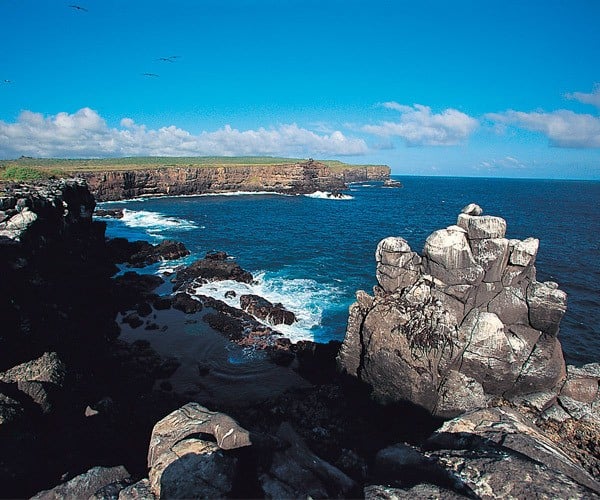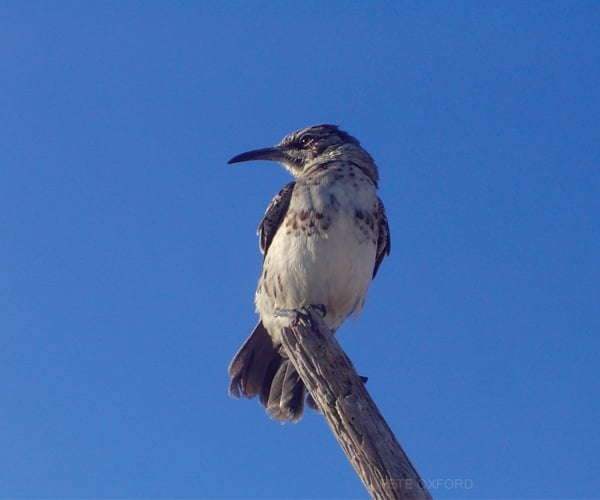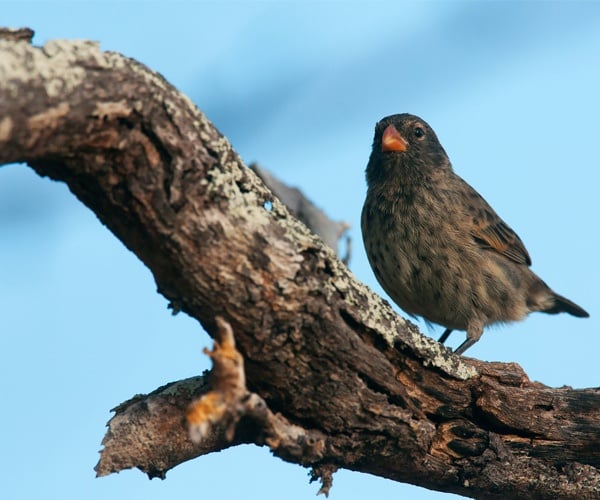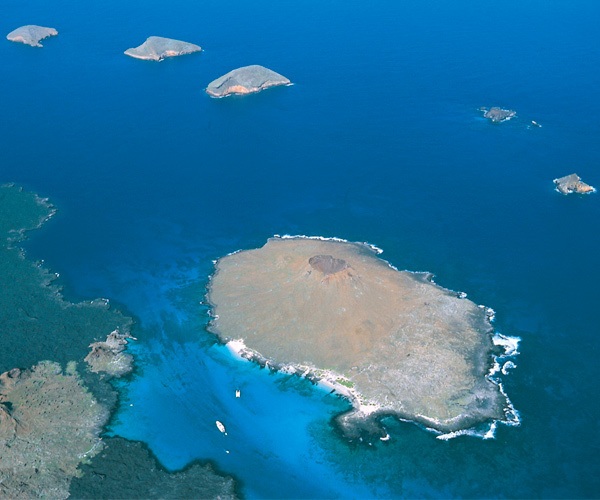5 reasons the Galapagos has left an irrefutable mark on science
The Galapagos Islands have arguably established their title as the most famous archipelago on the planet, and although this series of islands sits along the equator, their fame is not merely for their breathtaking beaches. Since Charles Darwin landed in the Galapagos Archipelago in 1835 and published one of the most groundbreaking theories known to science, the archipelago’s fame has shot upwards among researchers, divers, families and tourists alike.

The scientific relevance of Galapagos is thanks in large part to the key insights they have provided into Darwin’s theory of evolution by natural selection. To this day, the islands continue to provide important biological input into our understanding of evolution. Just as they astounded Darwin over 150 years ago, the unusual Galapagos flora and fauna continue to amaze visitors that come to explore the outstanding archipelago, humbled by the history it holds.
Galapagos mockingbirds
The long-tailed and pointy-beaked little birds you see hopping around the Galapagos is one of the first species that piqued Darwin’s curiosity. Charles Darwin immediately noticed a distinctive similarity between the Galapagos mockingbirds and those he had seen on the South American continent, but recognized that the differences were such that they could not be the same species. This interesting resemblance was something he kept in the back of his mind as he continued to explore the islands, wondering if the same would hold true for plant species. Later, aboard the HMS Beagle, he noted that “each variety is constant on its own island.” Darwin was on his way to discovering speciation through isolation; the birds not only varied between continent and archipelago, but also between each individual island.

Galapagos giant tortoise
The famous Giant Galapagos Tortoise, now known for its extraordinary size and longevity, also offered evidence to support Darwin’s hypotheses. The acting governor of the islands, Nicholas Lawson, had indicated to him that the giant tortoises differed between islands, such that residents could identify which island a tortoise was from just by looking at it. Following this comment, Darwin began to study the tortoises more in-depth, eventually coming to realize that each variety seemed particularly well suited to the island it lived on, as if they had been modified to take advantage of their environment. As visitors explore the islands today, they can easily observe these peaceful giants just as Charles Darwin did and note the differences in their shells, legs and necks that make them so perfectly suited for their distinct niches.

Endemic Galapagos plants
The exceptional diversity of the islands is most obvious in the Galapagos flora, which ranges from giant cacti to stunning orchids. More importantly, 30% of native Galapagos plants are found nowhere else on the planet, a fact that was certainly not overlooked by Darwin. An avid botanist, Darwin collected and carefully noted more than 200 plants in the Galapagos Islands, but it wasn’t until he returned to England that he really realized just how spectacular these plants were. Of the species he collected, approximately half were completely unknown to the scientific world. More importantly to Darwin, of these, 75% could only be found on single islands. Charles Darwin was beginning to realize that each island appeared to have its own vibrant ecosystem, separated from the others by mere channels of water.

Darwin finches
Darwin Finches are another Galapagos species that have been catapulted into the animal hall of fame. There are approximately 13 species of Darwin Finch in the Galapagos Islands, all of which evolved from a common ancestor over just a few million years, an incredibly short period of time scientifically speaking. In fact, during their 40-year-long study on the birds, Rosemary and Peter Grant gave us an idea of just how fast these birds evolve, observing visible changes between mere generations.
However, these birds first became famous in Darwin’s “On the Origin of Species.” The only slight modifications between each species led Darwin to wonder why there were so many species of finch in the islands that were so similar, yet subject to the same physical conditions. He noted that it was as if the “species had been taken and modified for different ends.” These observations were essential to forming his world-shaking theory of natural selection, contributing tremendously to the scientific relevance of Galapagos.

Galapagos geology
The geology of the Galapagos Islands is often one of the most overlooked aspects of the archipelago, but it has no doubt played an important role in our understanding of evolution. As Charles Darwin came to realize that he had discovered hundreds of species found nowhere else in the world, he was also looking at the land upon which they lived – volcanoes. Darwin knew that the volcanoes had formed after the initial creation of the Earth. However, if in fact these islands had not existed at the time Earth was formed, where did these unique animals come from? His answer would forever alter our understanding of humankind and life itself; life was not stable, but forever changing and evolving according to its surroundings. All this is what’s behind the scientific relevance of Galapagos!

Adrián Peñafiel is Corporate Commercial Officer at Metropolitan Touring. Metropolitan Touring shares the wonders of South America with the world’s explorers through memorable experiences in unique cultures and natural environments.
If you would like to be a guest blogger on A Luxury Travel Blog in order to raise your profile, please contact us.
Did you enjoy this article?
Receive similar content direct to your inbox.


I think that it is virtually impossible for anybody on the planet who has access to a television or who can read not to be aware of the scientific significance of the Galápagos Islands. Despite all the controversy and opposition, most people would go along with at least some of Darwin’s ideas. For all the excellent TV documentaries, the islands are still a place that I want to see for myself and it would be good to have the expert input of local guides.
Darwin Finches are very sweet. It’s incredible how Darwin was able to draw so many thoughts and observations together and form theories like that of natural selection that are so important and applicable today, despite the obvious debate of some of his ideas. There’s so much diversity on the Galapagos, you can see why it’s a treasure trove for scientific understanding. Fascinating look at all the different aspects of the islands.